Plumes of ocher and vermilion spice rise in the air, swirling through the millhouse before settling like a tribute to autumn’s palette.
During the peak hours of trade, women move with practiced urgency — pivoting, twisting, turning — while the gritty covering rasps beneath their feet, echoing against the smooth concrete floors.
The mill is located in the ancient city of Aksum in Tigray, nestled in Ethiopia’s majestic northern highlands, where mountains rise like teeth from the desert floor. And here, emerging through the haze of pungent aromatics, a long line of women forms, each patiently waiting, cradling colorful woven plastic bags in their arms. They are filled with homemade spice blends that will be ground by one of the seven machines, all humming at full capacity.
Amid the fe…
Plumes of ocher and vermilion spice rise in the air, swirling through the millhouse before settling like a tribute to autumn’s palette.
During the peak hours of trade, women move with practiced urgency — pivoting, twisting, turning — while the gritty covering rasps beneath their feet, echoing against the smooth concrete floors.
The mill is located in the ancient city of Aksum in Tigray, nestled in Ethiopia’s majestic northern highlands, where mountains rise like teeth from the desert floor. And here, emerging through the haze of pungent aromatics, a long line of women forms, each patiently waiting, cradling colorful woven plastic bags in their arms. They are filled with homemade spice blends that will be ground by one of the seven machines, all humming at full capacity.
Amid the feverish activity, the solitary silhouette of Beyenech Hagos, 42, stands apart. She pauses, gazing contemplatively through the tall windows of the millhouse, before returning to her seat at the helm of one of the roaring machines. “This work is everything for me,” she says. “It gave me sisters and friends.”
During the two-year war in Ethiopia’s northernmost region of Tigray, life around them ground to a halt as fighting raged. Shops, schools, hospitals and banks shuttered, and with them went women’s meager savings. When her 3-year-old boy got sick, Hagos couldn’t find a doctor, and the child died from what she says was a routine illness. “I felt I had failed as a mother, unable to save my child,” she says.
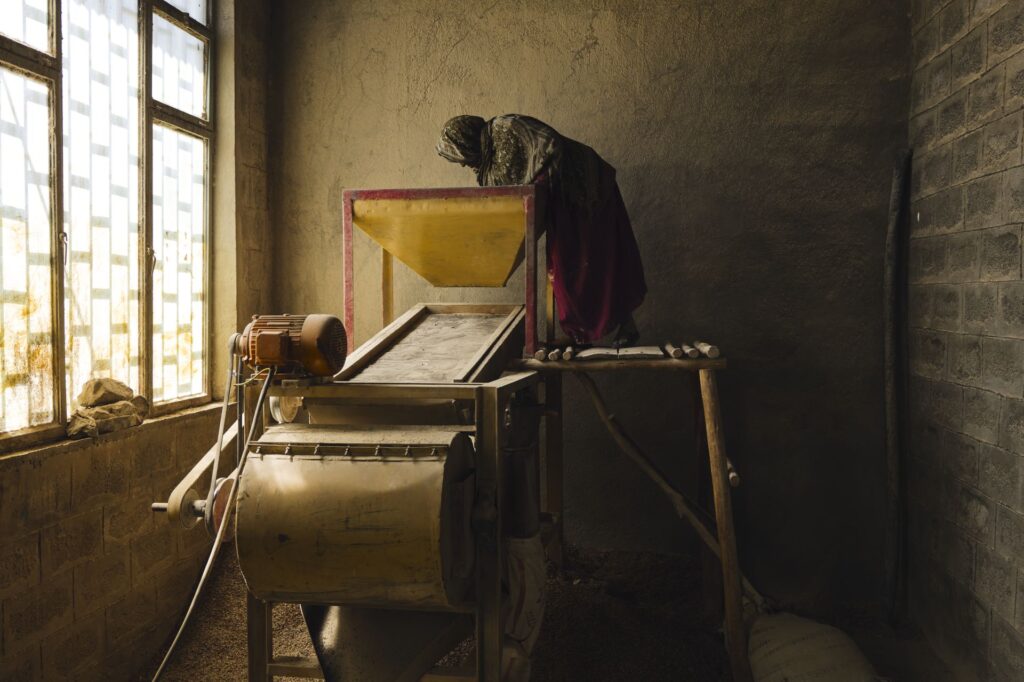 A worker cleans out the hopper before grinding barley to make flour at the spice mill in Aksum. (Paddy Dowling)
Hagos belongs to a collective of women who came together in 2023, a year after the war ended, through their shared love of preparing traditional Tigrayan food. Spices are woven into the very fabric of Ethiopian culture and society — from the frankincense that perfumes the air during coffee ceremonies, welcoming guests with reverence, to the deep red of berbere, a fiery blend of chili peppers every family crafts in its own unique way, to the herbal besobela basil that brings sweetness to traditional fasting dishes.
A worker cleans out the hopper before grinding barley to make flour at the spice mill in Aksum. (Paddy Dowling)
Hagos belongs to a collective of women who came together in 2023, a year after the war ended, through their shared love of preparing traditional Tigrayan food. Spices are woven into the very fabric of Ethiopian culture and society — from the frankincense that perfumes the air during coffee ceremonies, welcoming guests with reverence, to the deep red of berbere, a fiery blend of chili peppers every family crafts in its own unique way, to the herbal besobela basil that brings sweetness to traditional fasting dishes.
The millhouse processes barley flour to make beso, and also produces shiro, an indispensable staple in the diet of Tigray and northern Ethiopia. This flavorful dish is made from ground chickpeas or fava beans, blended with onion, tomatoes, spiced clarified butter, garlic, berbere, ginger and rue. Shiro is typically served with injera, the iconic sour, spongy flatbread made from fermented teff flour. It’s often served during Orthodox fasting days twice a week.
For the women of Tigray, spice is their past and present, a colorful mainstay of their lives, which have seen joy but also fighting and sexual violence. The two-year war, which killed 600,000 people and displaced 5 million, brought global attention to Ethiopia’s fractured politics. But the 2022 ceasefire is now at risk of breaking, and analysts say that another, wider conflict may be looming, involving Eritrea and potentially its allies.
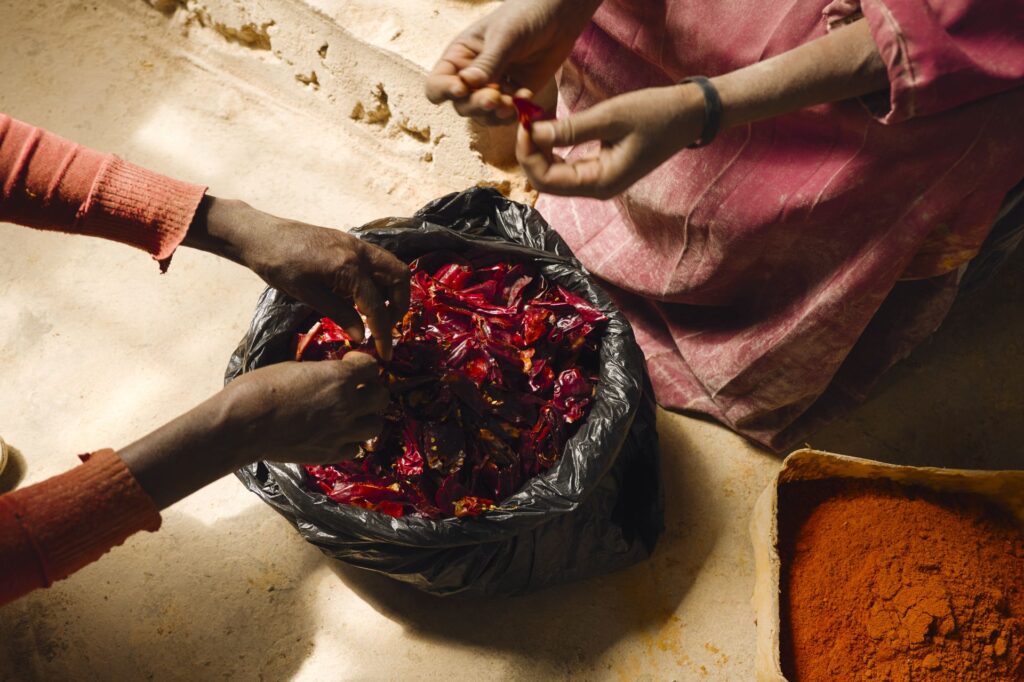 Grading red chili for imperfections before it is ground with other spices to create berbere. (Paddy Dowling)
During the conflict, access to spices became sporadic and difficult, disrupting the preparation of even the most basic meals. As primary caregivers, women bore the brunt of this burden — often going without food themselves to ensure that children, the elderly and other dependents had something to eat. Shiro “is the staple that our families rely on,” said 46-year-old Kadajit Amare, one of the founding members of the grinding enterprise. “Losing it felt like losing the foundation of our diet and a painful rupture in our cultural and social fabric.”
Grading red chili for imperfections before it is ground with other spices to create berbere. (Paddy Dowling)
During the conflict, access to spices became sporadic and difficult, disrupting the preparation of even the most basic meals. As primary caregivers, women bore the brunt of this burden — often going without food themselves to ensure that children, the elderly and other dependents had something to eat. Shiro “is the staple that our families rely on,” said 46-year-old Kadajit Amare, one of the founding members of the grinding enterprise. “Losing it felt like losing the foundation of our diet and a painful rupture in our cultural and social fabric.”
The 11 members of the Baltna Women’s Group are determined to help families stay connected to their Tigrayan roots and keep their beloved spices within reach, especially if war returns.
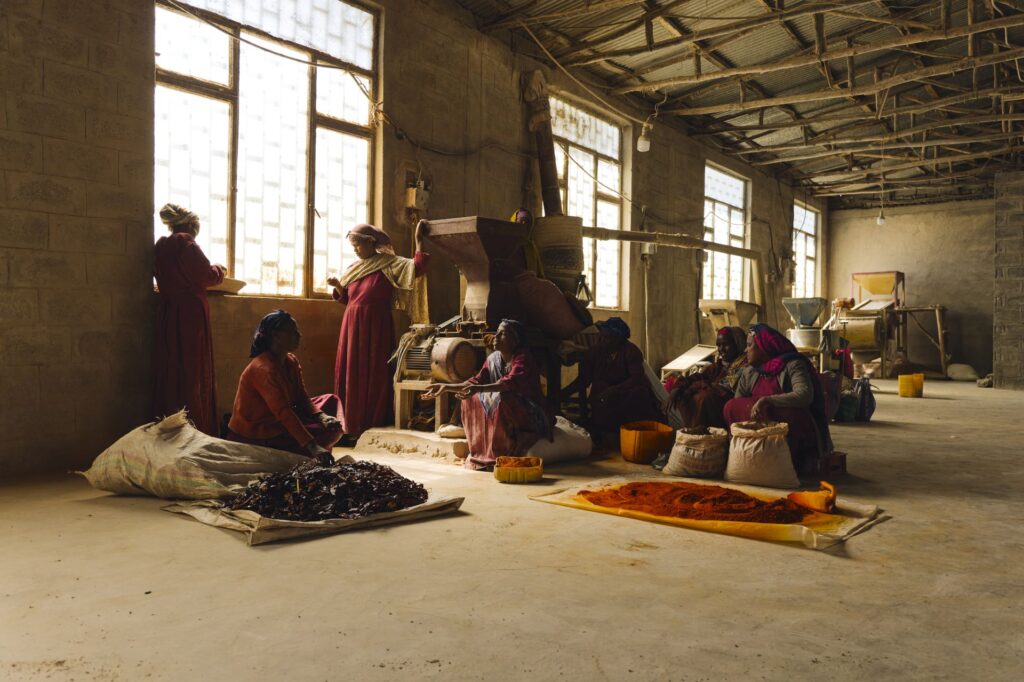 Some of the founding members of the mill in Aksum talking among themselves. (Paddy Dowling)
Spice has served as a symbolic part of Ethiopia’s history for more than 2,000 years. The ancient kingdom of Aksum, once a formidable regional power in the Horn of Africa region — including parts of modern-day Ethiopia, Eritrea, Sudan, Yemen and southern Saudi Arabia — harnessed the monsoon trade winds along the Silk Road to send its ships toward Asia in summer, and back to Africa in winter.
Some of the founding members of the mill in Aksum talking among themselves. (Paddy Dowling)
Spice has served as a symbolic part of Ethiopia’s history for more than 2,000 years. The ancient kingdom of Aksum, once a formidable regional power in the Horn of Africa region — including parts of modern-day Ethiopia, Eritrea, Sudan, Yemen and southern Saudi Arabia — harnessed the monsoon trade winds along the Silk Road to send its ships toward Asia in summer, and back to Africa in winter.
From the ancient Red Sea port of Adulis — on what is now Eritrea’s coastline — Aksumite ships slipped out with dhows, or sailing vessels, full of wind and hulls packed with ivory, tortoiseshell, frankincense, gold and emeralds. They returned from Asia bearing silk and spices so fragrant they perfumed the air before the ships even touched land.
Spices like black pepper, cardamom, turmeric, cinnamon and ginger weren’t just prized — they were power. In the ancient world, they were more valuable than gold, reshaping trade routes, empires and kitchens alike. Over time, their aromas would come to define Ethiopian cuisine, turning everyday meals into something sacred and storied.
Women, too, have always been at the center of this story. Makeda, the Ethiopian name for the Queen of Sheba, ruled from her palace in Aksum. According to biblical scripture and folklore, she led a caravan of camels to Jerusalem, carrying an “unprecedented abundance of spices,” including frankincense and myrrh, alongside gold and precious stones, as gifts for King Solomon.
The echoes of women like Makeda still resound today. Legendary tales of Ethiopian women as regents, fearsome warriors and economic pioneers are echoed in the accomplishments made by the new queens of Tigray, now today’s guardians of the historic spice trade, and their millhouse.
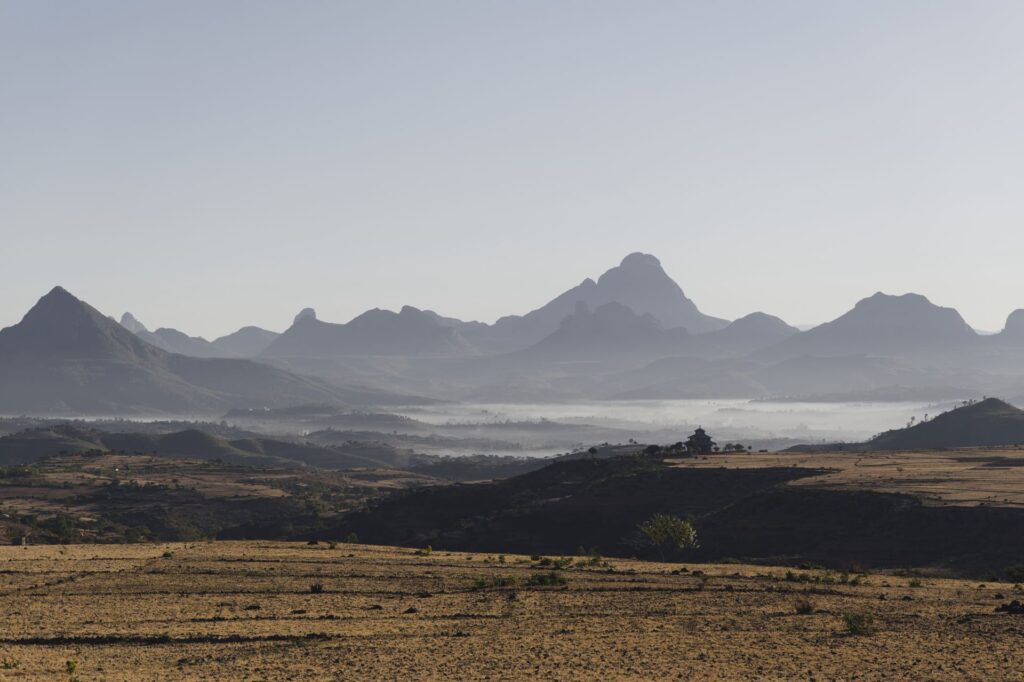 Early morning mist in the majestic highlands of Northern Ethiopia. (Paddy Dowling)
On a recent visit by New Lines, the women were busy making berbere, adding what is locally called a “sea spice” to enhance its color and taste. This includes dried onion, ginger, Ethiopian cardamom — a more pungent, smoky variation on the more widely available green version — cumin, black cumin, black caraway and rue.
Early morning mist in the majestic highlands of Northern Ethiopia. (Paddy Dowling)
On a recent visit by New Lines, the women were busy making berbere, adding what is locally called a “sea spice” to enhance its color and taste. This includes dried onion, ginger, Ethiopian cardamom — a more pungent, smoky variation on the more widely available green version — cumin, black cumin, black caraway and rue.
The chili was overpowering, forcing eyes and airways to surrender to its dominance in the mill. The other aromas soon became lost in the background once the berbere took center stage, its fiery blend flooding the space with relentless heat.
For most of the matriarchs, dressed in their elegant faded crimson dresses, sitting on the factory floor and gleefully conversing while grading their ingredients for imperfections, milling spices symbolizes comfort, resilience and their social and cultural identity as Tigrayans within the broader context of Ethiopia’s heritage.
“Preparing shiro and berbere is something women do together,” says founding member Zafu Kahsayeast. Beyond its nutritional value, shiro is steeped in cultural and emotional meaning. Its preparation is a quiet ritual, varying from region to region, and even from one household to the next. Recipes are perfected over lifetimes and fiercely protected, lovingly passed down from mother to daughter, generation after generation. Shiro isn’t just food: It’s memory, identity and home.
Kahsayeast, 37, carries the emotional scars of war. But she has discovered a therapeutic and profound sense of joy in preparing and grinding spice at the millhouse, in making shiro and berbere, surrounded by women.
“We chat about our relationships, social life and our problems,” she tells me, adding that her husband only agreed to the work once he realized there would be no men on the site.
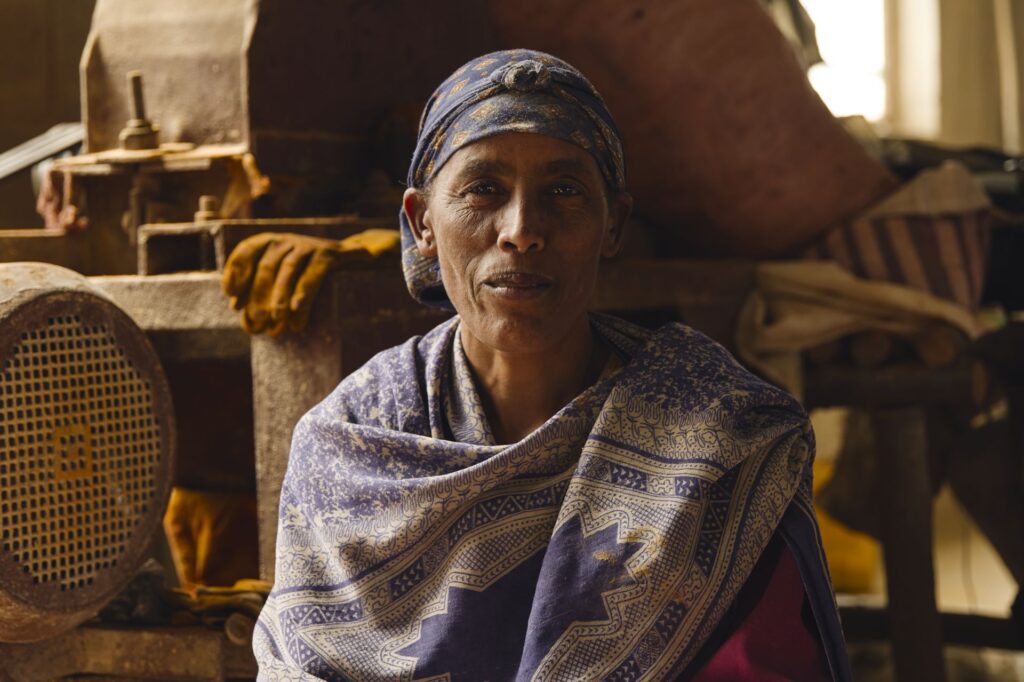 Zafu Kahsayeast, 37, one of the mill’s founding members, seated by the berbere grinder. (Paddy Dowling)
As wars so often do, the one in Tigray disproportionately affected women and girls compared to men, whether through reduced access to health care and food or the risk of violence. The lack of electricity and water made daily life unbearable. Many women faced childbirth alone and without medical assistance. Sexual violence in Tigray was particularly acute: Between 40% and 50% of women and girls in Tigray experienced sexual violence during the conflict, according to Refugees International, with 80% of victims reporting rape by armed groups.
Zafu Kahsayeast, 37, one of the mill’s founding members, seated by the berbere grinder. (Paddy Dowling)
As wars so often do, the one in Tigray disproportionately affected women and girls compared to men, whether through reduced access to health care and food or the risk of violence. The lack of electricity and water made daily life unbearable. Many women faced childbirth alone and without medical assistance. Sexual violence in Tigray was particularly acute: Between 40% and 50% of women and girls in Tigray experienced sexual violence during the conflict, according to Refugees International, with 80% of victims reporting rape by armed groups.
The war began as a political dispute between Ethiopia’s federal government and the Tigray region’s ruling party, the Tigrayan People’s Liberation Front. But soon after it started, reports surfaced of ethnic cleansing, mass killings, widespread detentions and the use of sexual violence and starvation as weapons — mainly targeting ethnic Tigrayans in Tigray and across Ethiopia. Tigrayans in Ethiopia are calling for international accountability for what they describe as a genocidal war aimed at erasing their ethnic identity.
Throughout the conflict, large pro-war rallies across Ethiopia revealed widespread public support for the war against Tigray. Many Tigrayans were deeply hurt by the gaslighting, the justifications of sexual violence and the denial of their suffering. This collective trauma has only deepened their resentment and strengthened calls for an independent Tigrayan state.
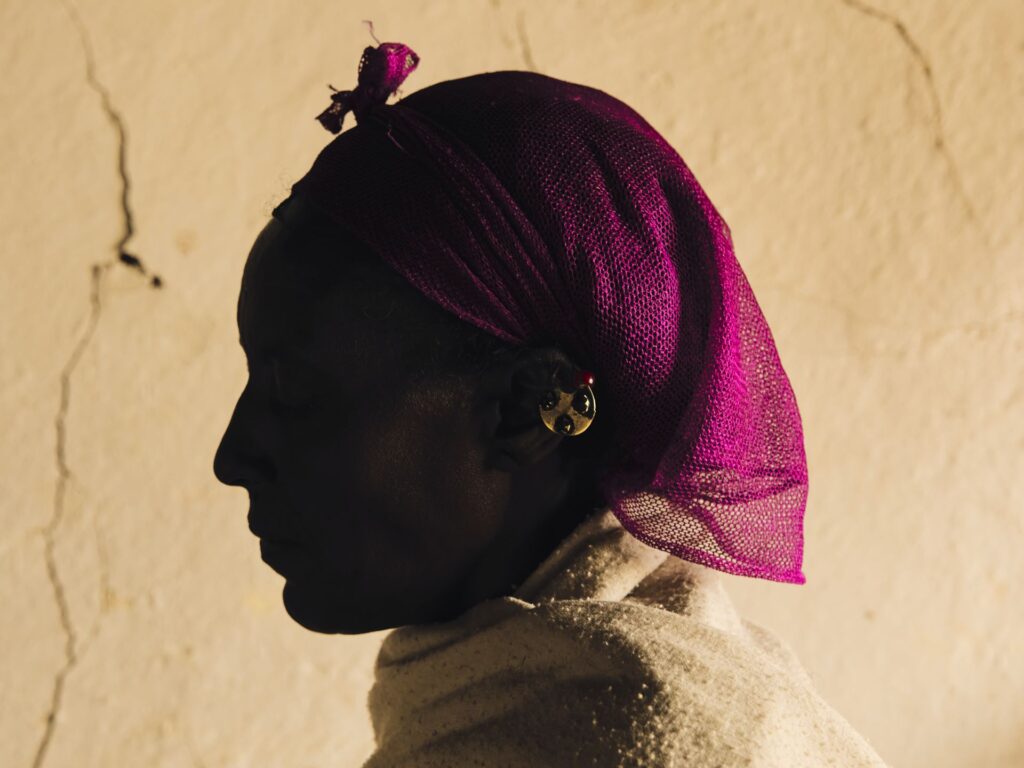 Haddas (not her real name) survived rape during the conflict. (Paddy Dowling)
In the villages and towns of this remote region, women’s stories of sexual violence surface quietly, scattered across the landscape, ever-present reminders of punishment for Tigrayan belonging and identity.
Haddas (not her real name) survived rape during the conflict. (Paddy Dowling)
In the villages and towns of this remote region, women’s stories of sexual violence surface quietly, scattered across the landscape, ever-present reminders of punishment for Tigrayan belonging and identity.
In a safehouse in Atsbi, about 125 miles east of Aksum, rape survivor Nigiste (not her real name) explains how she was kicked and beaten during an attack in which several soldiers raped her, breaking her front teeth. The community where she lived, on the outskirts of her town, shamed her despite Nigiste being the survivor of sexual violence and not the perpetrator.
Another survivor of rape, Haddas (also not her real name), seated on the floor in the shadows of her bedroom in the town of Atsbi, explains how two soldiers entered her dwelling at the start of the recent war in Tigray.
“They looted my gold, they vandalized our home and they took turns to rape me,” she says. Her husband, injured in the attack, was powerless to stop the aggressors.
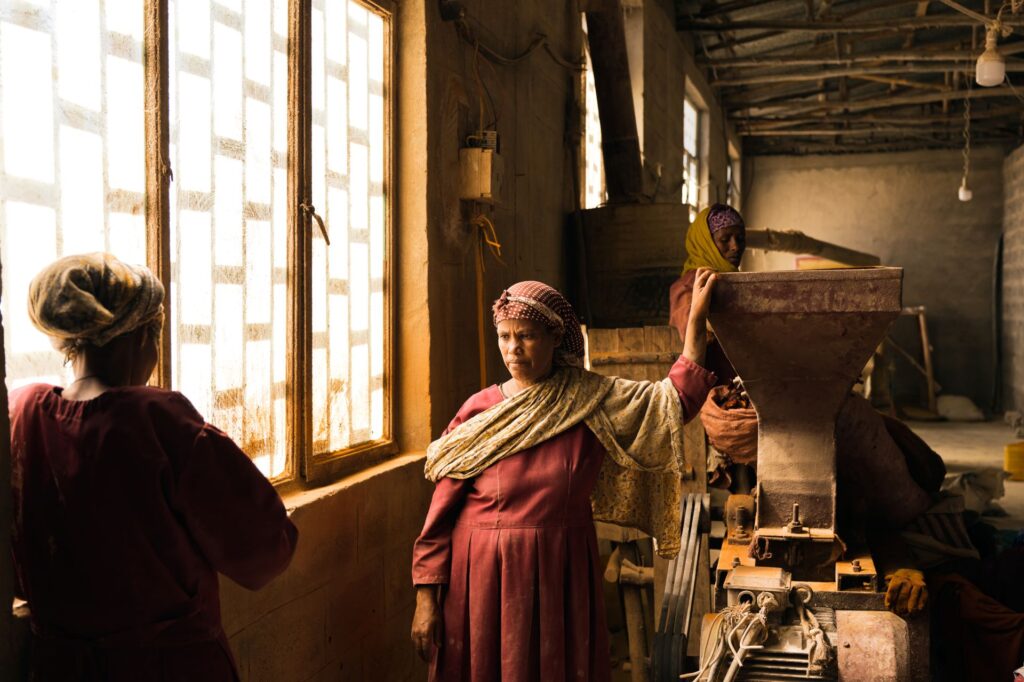 Founding member Kadajit Amare, 46, pauses during the busy morning rush. (Paddy Dowling)
Initially, the group of female spice millers formed in 2007 as a small-scale operation. But after the war, the women disbanded, and the business died. In 2023, the international organization CARE stepped in to finance the operation and move it to the abandoned millhouse.
Founding member Kadajit Amare, 46, pauses during the busy morning rush. (Paddy Dowling)
Initially, the group of female spice millers formed in 2007 as a small-scale operation. But after the war, the women disbanded, and the business died. In 2023, the international organization CARE stepped in to finance the operation and move it to the abandoned millhouse.
During the war, “Finding essential spices such as berbere and shiro powder became nearly impossible. Markets collapsed,” explains Filmawit Hadush, the project’s coordinator at CARE, which also provided New Linesaccess to the millhouse.
“Many women personally experienced and witnessed negative coping mechanisms, such as skipping meals, reducing portion sizes and relying on wild or less nutritious foods,” Hadush says. This meant that in trying to protect their families from hunger, women endured health issues.
For Hagos, it is more than a place to earn money. The millhouse and its kaleidoscope of colorful spice is her sanctuary, where she can heal the pain of loss. It has become her life raft. After her son died, she slowly returned to work. “For more than a month, it felt meaningless to be here,” she says. “But the women kept supporting me, they tolerated my mood changes, they never gave up on me.”
“Spotlight” is a newsletter about underreported cultural trends and news from around the world, emailed to subscribers twice a week. Sign up here.